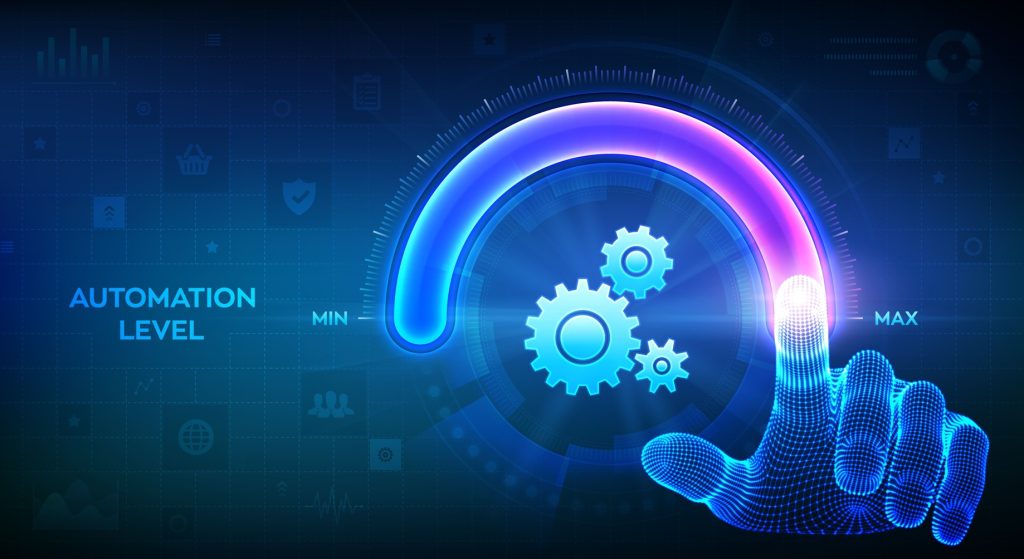- How an RPA software robot works
- Processes that can be automated with RPA
- How to identify the right processes for automation
- Key steps to implementing RPA in your company
Robotic process automation (RPA) technology has become one of the most effective methods for automating repetitive and time-consuming tasks. It allows organizations to achieve rapid results by optimizing activities that would otherwise require considerable effort from employees.
In this article, we will explore how an RPA software robot works, examples of processes that can be automated, how to identify the right processes for automation, and the essential steps for successfully implementing RPA in your company.
How an RPA software robot works
An RPA software robot is a tool capable of performing repetitive, rule-based tasks, much like an employee would. However, unlike humans, RPA robots can work non-stop without tiring or making mistakes. This is possible because they are programmed to follow well-defined steps for each process.
RPA robots can interact with various applications and systems without requiring changes to the existing infrastructure. For example, they can access databases, fill out forms, send automated notifications, or generate reports. This technology not only saves time but also eliminates human errors, offering 100% accuracy.
Processes that can be automated with RPA
RPA can be applied across various industries and fields to optimize activities involving large volumes of data or repetitive tasks. Below are some of the most common:
Data entry and validation
Manual data entry processes are prone to errors and consume significant time. With RPA, data can be extracted from multiple sources, automatically validated, and entered into specific systems without errors. For example, in the financial sector, RPA can process thousands of daily transactions while verifying their accuracy.
Report generation
Creating reports is a critical task for management but requires considerable time. Through automation, RPA collects and analyzes relevant data, generating customized reports in minutes. This enables managers to make quicker and better-informed decisions.
Invoice processing and payment management
In finance departments, RPA can automate the invoicing process by verifying data compliance and reconciliations. It can also automatically generate payment orders and send them to banks, significantly reducing processing time.
Order management
Retail and logistics companies can use RPA to manage orders from receipt to delivery. The robot can update inventory, check order statuses, and send notifications to customers, ensuring a better experience.
Human resources support
HR processes such as employee file management, onboarding, or contract generation can easily be automated. Automating these tasks allows HR teams to focus on employee development and strategic activities.
Customer relationship management
Another example of RPA usage is automating responses to routine customer inquiries. Robots can send personalized emails, update CRM information, and quickly resolve simple issues, thereby improving customer satisfaction.
Compliance monitoring
Industries such as healthcare, finance, or law involve complex compliance processes. RPA can automate document and procedure verification, reducing the risk of penalties and ensuring adherence to standards.

How to identify the right processes for automation
To successfully implement RPA, it is essential to identify processes that provide the greatest value to the company. Generally, the ideal processes for automation:
- Are repetitive and rule-based.
- Involve large volumes of data.
- Have a direct impact on operational efficiency.
- Require high precision.
A detailed analysis of internal workflows, in collaboration with the departments involved, can help identify processes best suited for RPA.
Key steps to implementing RPA in your company
Implementing RPA is a process that requires careful planning. Here are the essential steps:
- Process analysis: Identify and prioritize processes that can be automated.
- Choosing the RPA platform: Select software compatible with your company’s infrastructure.
- Defining objectives: Clearly establish the outcomes you aim to achieve through automation.
- Configuration and testing: Program the robots to perform the desired tasks and test their functionality.
- Deployment and monitoring: Implement the solution and monitor performance to optimize automated processes.
RPA process automation is a strategic investment that can bring significant benefits to any organization, regardless of its size. By reducing the time spent on repetitive tasks, increasing accuracy, and improving operational efficiency, companies can remain competitive in a dynamic market.
At htss, we offer customized solutions for every client, using advanced technologies such as generative AI and the Internet of Things (IoT), along with consulting throughout their digital transformation journey. From basic software solutions to advanced AI integration, we ensure that every company has the best tools to achieve its objectives.
Discover how htss can transform your business with RPA.

































